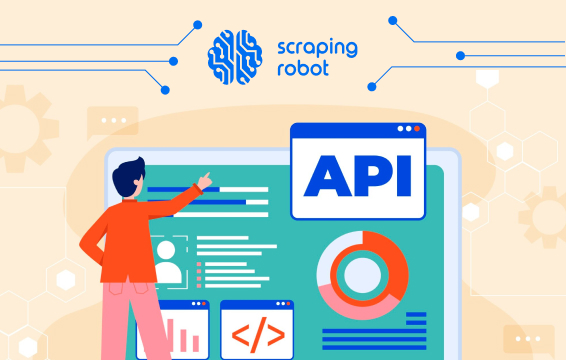Types Of API (And Applications Of APIs In Business)

API is an acronym for Application Programming Interface. It is a software intermediary (using a set of codes) which allows two different applications to communicate with each other. If you ever use applications to send messages then you might be aware that you are making use of an API. APIs are implemented by “function calls” which are language statements that request the software to perform specific actions and services.
For instance when you connect an application on your mobile device to the internet and send data to the server. The server collects the data sent and interprets it while carrying out the necessary actions and sends it back to your device. The application used then interprets the data and presents information to you in a readable format. All these are carried out through API.
API also serves as a layer of security for data. It protects full access to the owner’s data from other applications allowing only for the passage of required data and information shared between applications. They also can speed up and simplify software development. In this article, we’ll take a general overview of APIs and zero in on the types of API and how to use them. Feel free to skip through this article with the table of contents below.
Table of Contents
Types of API
Before we dive into the types of APIs, let’s talk some more about how APIs do their thing. Imagine if you decided to open a new online platform that shows weather situations from all over the world in real-time. Now, you build the platform and include a mechanism for displaying the weather situations, obviously. Then you build a backend that includes a search function. This is what pulls the right data and directs it to the display section on the frontend. So now you have the display and the data recovery functions, but where do you get the data itself from?
You cannot launch your own weather satellite, so you need to get the data from a platform that already has its own satellite. This is where an API comes in. An API is what helps you pull the weather data from the platform and direct it to your own platform where your backend search function can pull the data from and direct it to the user’s display. APIs then, serve as a data extraction and transportation system, helping you save time, effort, and money by not having to reinvent the wheel every time you need a single line of data from an external system.
There are different types of API, but when looking at APIs in terms of release policies, they can be divided into three major types which are;
- Private: Private APIs are built for organizations and companies. As such, they are hidden from external parties. Their use is restricted to the organization they are built for and is used mostly by the employees. This type of API software is specially designed for improving solutions and services within the organization as well as enhancing communication. If the company houses a public application the interface remains available only to those working with the API publisher, meaning that employees will need to be identified before granted access into the system. The use of Private APIs also gives companies autonomous power in controlling the usage of their API software.
- Public/External: Unlike Private APIs, these APIs are free and accessible by anyone. They have low-level security measures as such they can be accessed by external users and available to all third-party app developers. Companies with large audiences who might want to streamline communications with third-party users, such as clients or vendors may opt for the use of Public APIs while earning additional income when it is properly executed. Another feature of Public APIs so that they also allow for quick buildup and implementation of various components without restrictions. There are two types of Public APIs which are the Open and Commercial APIs. The Open API indicates that all features of such software are public and usage is without restrictive terms and conditions. Commercial API users are charged for the use of such API, as such publishers tend to offer users free trials to test the APIs before making purchases.
- Partner: This type of API is not open to the general public even though it might be promoted publicly, developers do not have rights to these APIs without proper licensing and rights. The Partner APIs are shared among business individuals who have reached an agreement with the publisher. Partner APIs are also used to enhance communication between companies and their external users. Business partners will however need to be granted access to security data before they can be allowed to access information.
- Composite API: Composite APIs are built to combine a batch of API requests into a single operation. Rather than create several round calls to a server, a client can make one request to the API with a chain of calls and receive one response. This functionality makes composite APIs ideal for use in microservices, where multiple services are required to carry out a specific operation. The Composite APIs also allow developers to access various endpoints in a single call.
Different types of API calls
When making a request to the server using an API, you’re making an API CALL. Simply put, when you make use of your device and ask questions or search for information on the internet, you’re making an API CALL. An API call goes through the following process from start to finish:
- Route APIs: The API infrastructure has to verify that the client API (the API making the call) is on the right path to access the backend system it is requesting access to.
- Authorize APIs: Then the infrastructure has to confirm that the guest has the right permissions.
- Secure APIs: Here’s where the data pipeline is encrypted to prevent leaks or breaches.
- Shape APIs: Provide the needed bandwidth for the call to go through.
- Cache APIs: When there is a high volume of requests on the API infrastructure, caching helps you manage it.
These are the steps it takes to complete an API end-to-end call. Now, let us look at the different types of API infrastructure for calls and making requests.
Types of API Call
There are different types of API CALL they include the Web APIs, Operating System APIs, Database APIs, and Remote APIs.
- Operating system APIs: This set of APIs determines how an application makes use of the resources and services of operating systems (OS). Now for every operating system, there are specific APIs which they use.
- Database APIs: The Database APIs allow communication between an application and a database management system. This is especially useful if your business is partly or entirely online.
- Remote APIs: The Remote APIs define interaction for applications that are working on various machines.
- Web APIs: This is one of the most common classes of API. This form of API can be accessed using the Hypertext Transfer Protocol (HTTP) protocol to deliver requests from web applications and data responses from servers. The Web APIs also provide machine-readable data and functionality transfer between web-based systems.
Applications of API Types
There are also various categories of APIs that various applications make use of to carry out their services and functions. Applications such as Weather, Sports, Travel, Cloud, Machine Learning, Data, Events, and so many other aspects have their based APIs which they use to carry out their functionality.
APIs for weather: When it comes to things like weather situations, it is impossible for every website that wants to give weather reports to have its own satellite. Instead, they use APIs from other platforms that already have the weather data. By using an API, they can connect their system to that of the host website and funnel the weather data directly to their own website.
APIs for finance: When you are in a niche like finance, say you are a stockbroker, the value of accurate ad timely data cannot be overstressed. And that is what APIs offer you. Using an API to set up a continuous call, you can keep yourself updated with the latest financial data from a platform like Yahoo! Finance. The API simply connects with the Yahoo API and updates your own platform with the latest news as soon as it is available.
APIs for data analytics: You can’t do data analytics without data. And one of the easiest ways to get data now is with an API. Using a data API like Scraping Robot’s public API, you can not only collect the data you need easily, you can set up a data collection funnel that sends the data directly into your analytics setup.
APIs for sports: APIs are already extensively used in sports especially by live score applications and betting platforms. There is an urgent need for real-time updates in sport and using APIs is one of the easiest ways to achieve this. With a real-time API, sports platforms can constantly give you accurate updates on how your favorite match or betting slip is faring.
APIs for real estate: The real estate industry is one where a single line of data can be the difference between a successful sale and a failed one. APIs can help you make sure that one line is never omitted.
These are just a few of the practical applications of API technology in real-life practices. APIs can be used almost anywhere: geolocation, machine learning, NLP, search, cloud computing and so much more. API technology is the best thing since sliced bread (and fried chicken).
A New Type of API

At Scraping Robot, we have developed an API that offers you immense possibilities. Coupled with our web scraping service, you can scrape data from any website on the internet and then send it directly into any piece of software you want with minimal manual input from you. Essentially you could obtain real-time data updates from any platform you want and connect these updates to your software using our API.
With proxies for our partner company, Rayobyte, we offer you a very fast and efficient service that helps you get from point A to point B in your data journey in the shortest possible time. To get started, check out our API page here. There are plenty of existing modules designed to collect essential datasets for any purpose, from e-commerce to URL data to social media engagements. Let us know if any of the modules spark your next project, and we can help make it happen.
Conclusion

APIs have made the internet a lot more connected. With the click of a button, you can log into a website account with your Google details without having to type out passwords and usernames. That is how useful APIs have become. There are many different types of API, but Scraping Robot offers one of the most useful public APIs out there. Make sure you check it out for your next API project.
The information contained within this article, including information posted by official staff, guest-submitted material, message board postings, or other third-party material is presented solely for the purposes of education and furtherance of the knowledge of the reader. All trademarks used in this publication are hereby acknowledged as the property of their respective owners.
